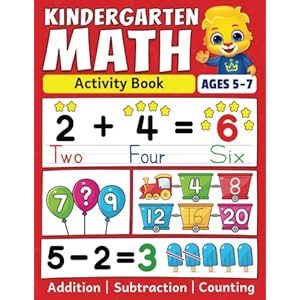By Erin P. Micali, Psy.D
Math is a polarizing subject. For some children it’s their favourite topic. For others, the considered numbers sends a chilly sweat down their backbone—actually: Analysis reveals that for these children math actions set off the identical response of their mind that ache and perceived threats do.
Anxiousness or LD
Regardless of what some dad and mom (and even some educators) assume, math anxiousness isn’t the identical as dyscalculia—the time period used to explain math studying disabilities. Whereas each can intervene along with your youngster’s potential to entry math-based reasoning abilities, there are distinct variations between an LD and anxiousness. Probably the most notable distinction is that math LDs are a neurodevelopmental prognosis, which implies that one’s neurological and cognitive improvement is considerably totally different than their friends.
For most youngsters with a math studying dysfunction, underlying indicators (“tender indicators”) of dyscalculia are obvious in early childhood. They might have problem recognizing numbers, studying to rely, have a tough time with sample reasoning and profit from visuals to finish calculations. It could seem that they can’t grasp or retain math-based details or ideas and this problem might lengthen past the classroom: telephone numbers, scoreboards, cash, or instructions are tough as properly.
A math LD can be much less frequent than math-based anxiousness. Regardless of occurring equally in girls and boys, solely about 5-7% of elementary schoolers meet standards for a math LD prognosis. As individuals become older their signs of an LD in math might wax and wane in depth although their studying variations stay part of their studying profile.
In distinction, anxiousness stemming from math is a mental-health dysfunction that impacts about 20-25% of kids and is extra frequent amongst females. Math anxiousness can pop up in elementary, center, and even highschool. Folks might expertise anxiousness for a brief interval till they obtain remedy, grasp an idea, or by way of maturity. Whereas anxiousness might resurface occasionally, it’s not linked to variations within the mind as math LDs are.
Math Anxiousness Signs
In case your youngster has math anxiousness they might be more and more detrimental about their abilities and efficiency in math as in comparison with different programs. Different tell-tale indicators embody challenges with motivating your youngster to do math, avoiding math, or a pile of missed assignments as a method of procrastinating. When doing math they might seem extra tense or harassed. If their anxiousness is escalating, they might present indicators of panic or avoidance, and you could discover patterns akin to your youngster constantly being sick or asking to remain residence on check days. This might not be “faking sickness” however somewhat a bodily symptom of their anxiousness!
Nonetheless Uncertain?
Following are some questions that will help you decide in case your youngster has math anxiousness or math LD:
- Does it seem as in case your youngster is studying a brand new math idea for the primary time, each time they evaluate an idea they’ve presumably been taught?
- Do it’s a must to reteach your youngster the identical factor over and over?
- When did you first discover these signs?
- Is my youngster having a tough time studying math ideas or are they extra proof against math?
- Do they keep away from math class?
What You Can Do
Among the therapies of math-based LDs and anxiousness overlap, whereas others are considerably totally different.
- Each anxiousness and LDs profit from early, frequent intervention and being taught the expansion mindset. You may assist your youngster outgrow math-based anxieties by reframing their worries and offering constructive reinforcement and encouragement.
- Moreover, at occasions, anxiousness can stem from youngsters needing assist mastering ideas or re-learning a difficult unit. In these situations (particularly when the kid has not but grasped foundational ideas) anxiousness can current as LDs. In these occasions reteaching and rehearsals of knowledge is useful. When treating anxiousness, you’re focusing on underlying self-confidence related to a toddler’s perception of their skills.
- Children study from their surroundings, so selling a wholesome relationship whereas discussing feelings is essential. Discuss anxiousness and mannequin expressing your stress or unease in addition to mannequin wholesome coping mechanisms.
- Assist your youngster to study examine habits and government functioning methods. These will assist them to really feel extra ready for courses.
- If you happen to’re fearful, discuss to the trainer about your issues. They can information you in direction of assets in your youngster. You may also deliver it as much as the pediatrician or a psychologist to find out if analysis is required.
Whether or not anxiousness or LD, you do your youngster a disservice by not addressing it. If you happen to don’t intervene each anxiousness and LD can affect future aim setting, planning and profession selections. However greater than that, it will possibly depart individuals weak to avoiding essential on a regular basis duties like budgeting and understanding their funds or salaries.
Dr. Erin Micali is a senior postdoctoral fellow at Sasco River Heart in Darien, CT who focuses on pediatric neuropsychology. Her focus areas embody neurodevelopmental problems and early childhood evaluations.
Associated Sensible Children Matters
Trending Merchandise











